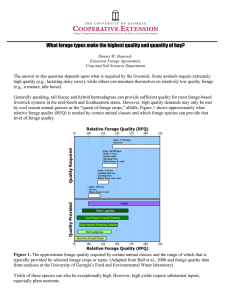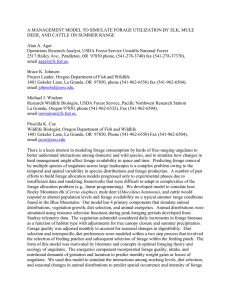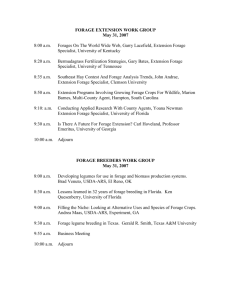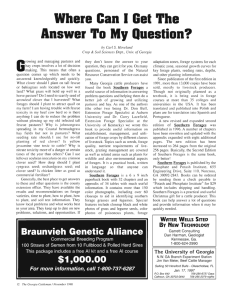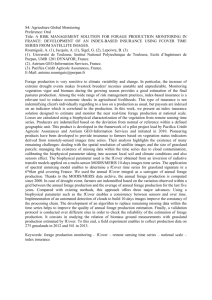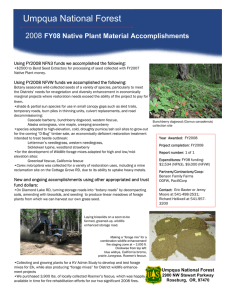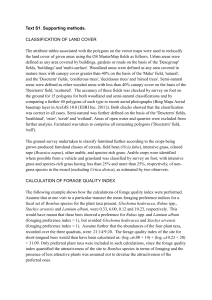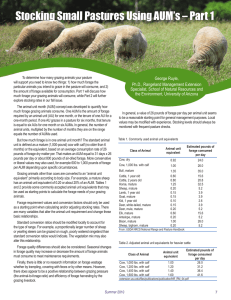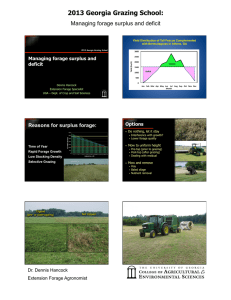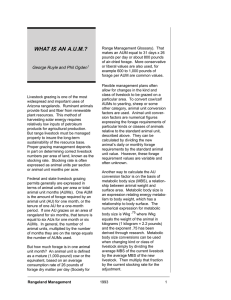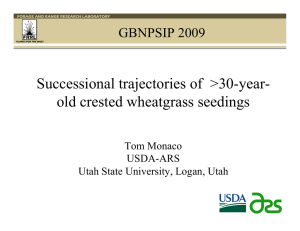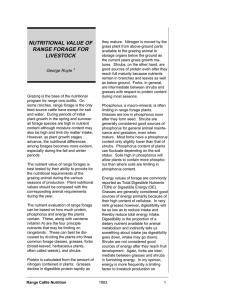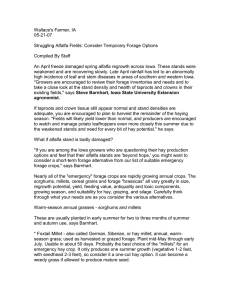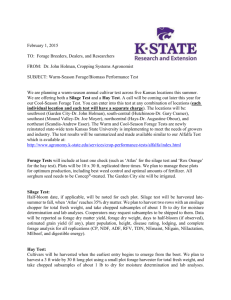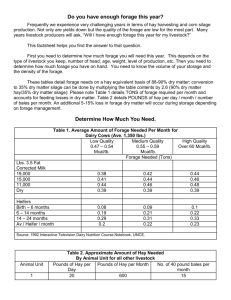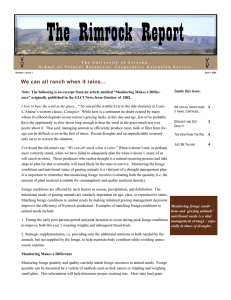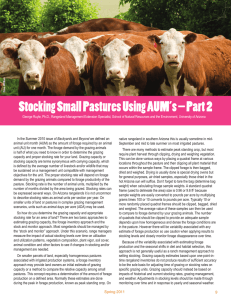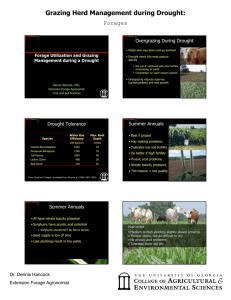biodiv23 - Okavango Research Institute
advertisement
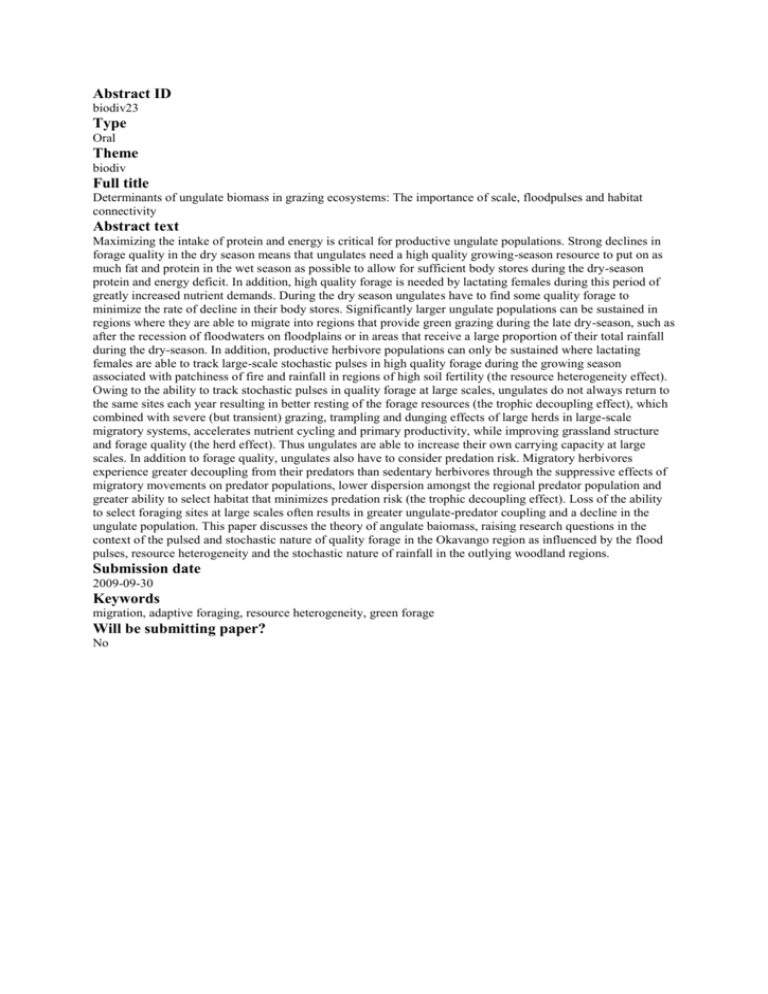
Abstract ID biodiv23 Type Oral Theme biodiv Full title Determinants of ungulate biomass in grazing ecosystems: The importance of scale, floodpulses and habitat connectivity Abstract text Maximizing the intake of protein and energy is critical for productive ungulate populations. Strong declines in forage quality in the dry season means that ungulates need a high quality growing-season resource to put on as much fat and protein in the wet season as possible to allow for sufficient body stores during the dry-season protein and energy deficit. In addition, high quality forage is needed by lactating females during this period of greatly increased nutrient demands. During the dry season ungulates have to find some quality forage to minimize the rate of decline in their body stores. Significantly larger ungulate populations can be sustained in regions where they are able to migrate into regions that provide green grazing during the late dry-season, such as after the recession of floodwaters on floodplains or in areas that receive a large proportion of their total rainfall during the dry-season. In addition, productive herbivore populations can only be sustained where lactating females are able to track large-scale stochastic pulses in high quality forage during the growing season associated with patchiness of fire and rainfall in regions of high soil fertility (the resource heterogeneity effect). Owing to the ability to track stochastic pulses in quality forage at large scales, ungulates do not always return to the same sites each year resulting in better resting of the forage resources (the trophic decoupling effect), which combined with severe (but transient) grazing, trampling and dunging effects of large herds in large-scale migratory systems, accelerates nutrient cycling and primary productivity, while improving grassland structure and forage quality (the herd effect). Thus ungulates are able to increase their own carrying capacity at large scales. In addition to forage quality, ungulates also have to consider predation risk. Migratory herbivores experience greater decoupling from their predators than sedentary herbivores through the suppressive effects of migratory movements on predator populations, lower dispersion amongst the regional predator population and greater ability to select habitat that minimizes predation risk (the trophic decoupling effect). Loss of the ability to select foraging sites at large scales often results in greater ungulate-predator coupling and a decline in the ungulate population. This paper discusses the theory of angulate baiomass, raising research questions in the context of the pulsed and stochastic nature of quality forage in the Okavango region as influenced by the flood pulses, resource heterogeneity and the stochastic nature of rainfall in the outlying woodland regions. Submission date 2009-09-30 Keywords migration, adaptive foraging, resource heterogeneity, green forage Will be submitting paper? No
